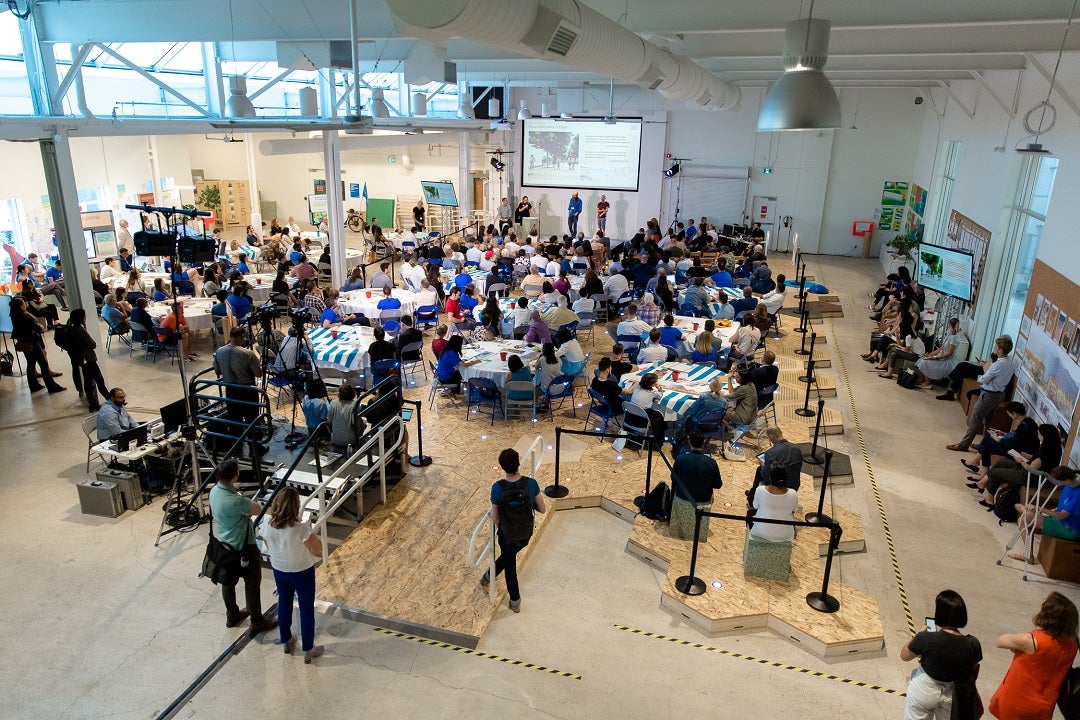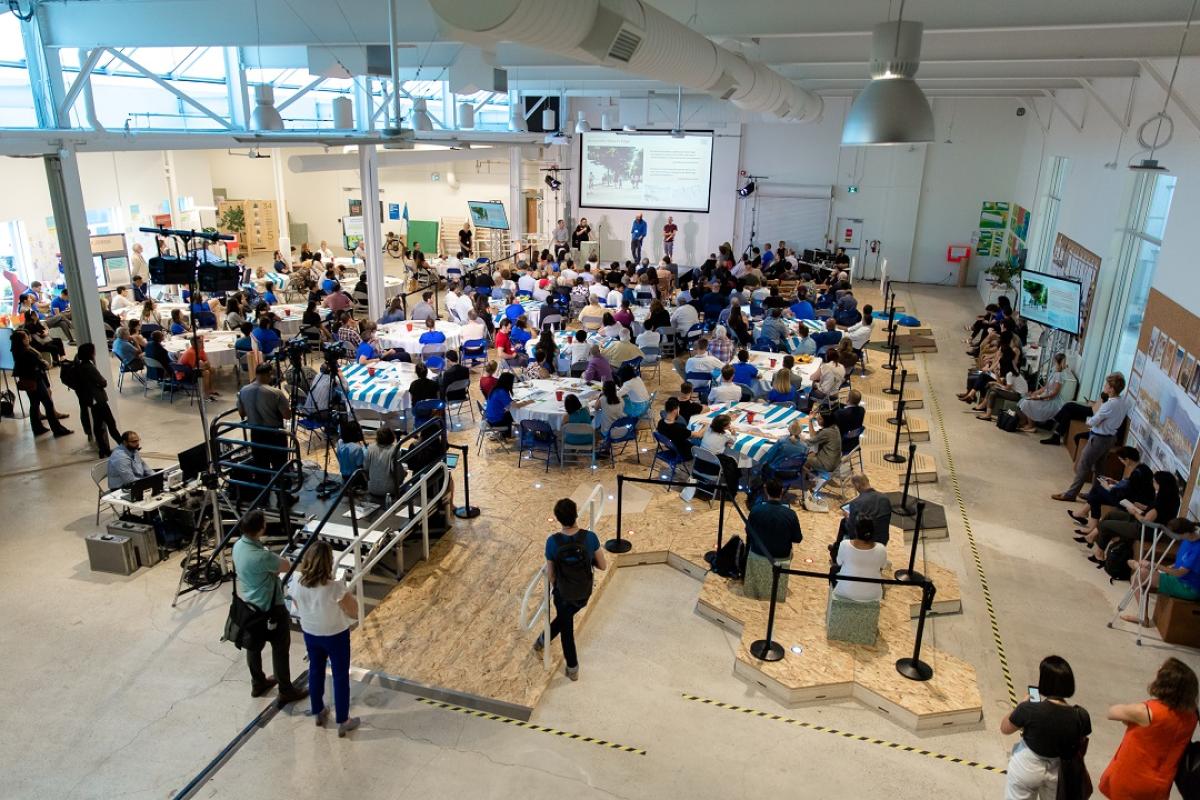Recap: Sidewalk Toronto’s Third Public Roundtable
By: Stephanie Chow

On August 14 and 15, more than 400 Toronto residents joined Waterfront Toronto and Sidewalk Labs for the third public roundtable meeting on the Sidewalk Toronto project. At the meeting, the project team shared concepts for the public realm, streets, and buildings for the 12-acre Quayside site. The meeting was hosted at “307”—Sidewalk Labs’ office and workshop—and provided participants with the opportunity to interact with the generative design tool and explorations on building with tall timber and modular paving.
Highlights
Consultation meetings are critical to shaping livable communities. Sidewalk Toronto’s first and second roundtables introduced our innovation and funding partner, Sidewalk Labs, as well as explained the innovations that could help Quayside achieve the ambitious sustainability and affordability targets that we have set for it. Last week’s meeting brought forward specific ideas around public realm, buildings, and streets.
Here are a few of the key concepts we brought forward:
Public Realm
We think of public realm as public spaces in a neighbourhood—like parks, plazas, sidewalks, and other in-between spaces—that are accessible to everyone. Within the public realm, we have been excited about the concept of dynamic streets for Quayside: streets that can morph into pedestrian walkways, outdoor plazas, roadways, or bike lanes, at any time of day or year. Once technology that can help us accomplish this is modular paving. Hexagonal slabs that can be removed and replaced easily, heated to melt snow, and illuminated to reconfigure the street and help guide pedestrians, cyclists, and drivers in real-time.

Viewing streets as a series of removable, modular, flexible pavers.
Our long Canadian winters make it challenging to draw people to the waterfront all year round, which is why our goal for Quayside is to not only allow more people outdoors to animate the public spaces, but to have Toronto residents using the waterfront for longer periods of time throughout the year. Outdoor comfort systems that allow outdoor spaces to be used and active year-round are great ways to fix this problem. For example, “building raincoats,” made from lightweight translucent material that can disappear/reappear based on real-time weather, can allow the spaces immediately surrounding buildings to be accessible and utilized in every type of weather.

Building raincoat concept
An important aspect to public realm is ground floors, and we see that as an integral part of the experience for Quayside. We have adopted the term “Stoa” from ancient Greece (which refers to covered walkways that were used for markets and informal gatherings) as inspiration for the open, flexible environment that we hope to create within Quayside. Adopting stoa into our design means we can work with movable walls, flexible panel systems, and fast floor installations, which allows the community to quickly shape the space according to its needs. Activating the ground floor in this way while also incorporating building raincoats and dynamic streets would create a more permeable boundary between indoor-outdoor space and allow the public to have more accessibility to the public space while giving the neighbourhood a very distinct identity.

Click here for a closer look at the rendering!
We want to provide the public with unique ways to experience the water’s edge in the central waterfront, something we have done to great success in our previous projects. We can accomplish this by elongating Parliament Slip to bring Lake Ontario closer to Lake Shore Boulevard East while building wave decks, in the spirit of those in the Central Waterfront, and bridges that stretch across the water. This would allow people to engage with the water in new and different ways—which is what coming to the waterfront is all about.

A rendering of Quayside
Streets
Cyclist fatalities are increasing in Toronto, so the time to act on this issue is now. The streets making up Quayside can be designed as a network that has different speeds (one of the most important factors in accident fatalities) and are prioritized for different modes, to ensure that pedestrians and cyclists’ needs come first. With this type of street design, we can prevent transportation fatalities and create a space where pedestrians can move freely and safely around the neighbourhood.
Autonomous vehicles (driverless cars and delivery vehicles) could be used in Quayside and would have enough intelligence to follow rules, adapt to the dynamic street changes, and remain at low speeds within a people-first space. The crucial point here is that we re-design streets that serve our needs first—then program AVs to adjust to that new streetscape.

This concept shows what dynamic streets could look like at Quayside
Buildings
Quayside could become the first neighbourhood made out of mass timber buildings. Using specially engineered wood creates climate-friendly, healthier, and naturally beautiful buildings for people to enjoy. These materials could also be an economic boost for Canada, where timber is a bountiful natural resource. Mass-timber buildings achieve faster construction times and higher quality by building the materials off site and then bringing them on site to be assembled.

We drew inspiration from other tall timber structures around the world.
What do you think?
If you missed the roundtable but want to get involved, there is still an opportunity for you to participate and share your feedback with us!
First, watch the full presentation by clicking on this link.
Download the Roundtable 3 Workbook from the Sidewalk Toronto website. Fill out the workbook and submit it to hello@sidewalktoronto.ca no later than August 24th, 2018. We look forward to reading your thoughts!
You can also view the full presentation deck on the Sidewalk Toronto website.

